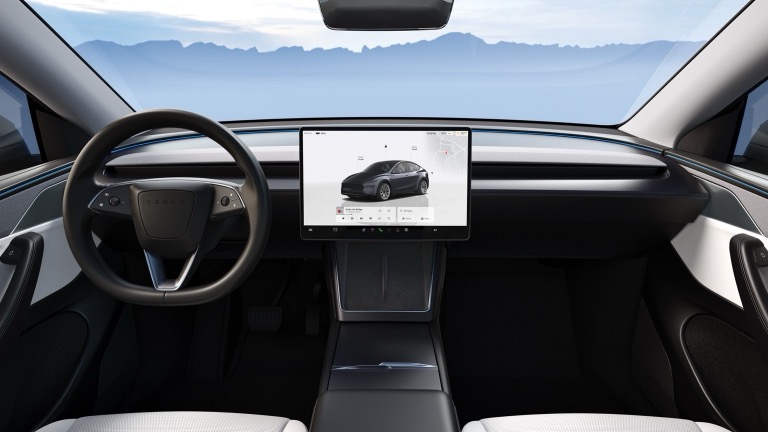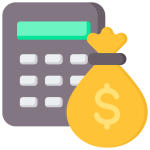
Tesla has signalled that its supervised Full Self-Driving (FSD) software will be arriving “soon” in Australia and New Zealand, posting a short video to the Tesla Australia & New Zealand X account showing a Model 3 driver initiating the system from the centre screen. The clip – and a stream of test footage filmed on roads in Melbourne, Sydney and Auckland – marks the clearest indication yet that Tesla is preparing a controlled rollout of its next-generation driver assistance suite in right‑hand‑drive markets.
What Tesla has shown so far
- May video (Melbourne): Tesla posted footage of a Model 3 completing a drive on Melbourne roads with no apparent driver input for steering, accelerating or braking. The clip underlined the company’s intent to test city driving behaviour in Australian conditions.
- July video (Sydney): A second short film captured a supervised FSD-equipped vehicle navigating a roundabout and inner-city streets with the Sydney Harbour Bridge and Opera House in the background – a high-profile demonstration of urban capability.
- New Zealand testing: Tesla shared further footage showing a Model 3 negotiating narrow Auckland streets, speed humps and tight passing scenarios where parked vehicles force single‑lane traffic flows.
Tesla’s country director for Australia, Thom Drew, has publicly stated there are no known regulatory barriers to deploying supervised FSD in right‑hand‑drive markets, and the company appears to be preparing for an incremental, invitation‑style release similar to previous rollouts.
What “FSD Supervised” means (and what it doesn’t)
“FSD Supervised” is not fully autonomous driving. Despite the “Full Self-Driving” name, Tesla’s supervised mode requires a human driver to remain alert and ready to take over at any moment. Key points:
- Driver responsibility: The driver is legally and practically responsible for the vehicle’s actions while supervised FSD is engaged.
- Driver monitoring: Safe use implies an active driver monitoring system (DMS) – cameras and software to confirm driver attention – though Tesla’s exact approach varies and has been a focal point of scrutiny.
- SAE level: Independent observers typically classify Tesla’s FSD as an advanced driver assistance system (around SAE Level 2 to 2.5) rather than true Level 4/5 autonomy, which would not require human intervention.
Regulatory and safety context in Australia and New Zealand
Australia and New Zealand each regulate road safety and vehicle standards through a combination of national and state/territory agencies. For Australia that includes federal bodies such as the National Transport Commission and state road authorities; in New Zealand, Waka Kotahi NZ Transport Agency oversees road safety and vehicle rules. Key considerations:
- Legal framework: Road rules in most jurisdictions currently assume human control; any claim that a vehicle is operating autonomously would be examined under existing legislation and by insurers.
- Safety assurance: Regulators will expect robust evidence on driver monitoring, system fail‑safes, real‑world performance and data collection practices before endorsing higher levels of autonomy.
- Privacy and data: Public and regulatory scrutiny will focus on how Tesla collects, stores and uses vehicle camera and driver data, in line with the Australian Privacy Act and New Zealand privacy principles.
How Tesla typically rolls out FSD – what to expect
Based on Tesla’s historic practice in other markets, Australians can reasonably expect the following rollout characteristics:
- Staged OTA releases: Tesla tends to expand access incrementally through over‑the‑air updates to eligible vehicles and drivers.
- Eligibility criteria: Early access may be limited to owners who satisfy certain safety or usage metrics (e.g., Tesla’s prior “safety score” system used in the US), recent software versions, or specific hardware configurations.
- Payment model: Tesla has offered FSD both as a one‑off purchase and as a monthly subscription in some markets. Pricing and the availability of subscription options for Australia/New Zealand remain unconfirmed.
- Monitoring and feedback: Early adopters may be asked to participate in monitoring and provide feedback as part of the wider test program.
Practical implications for drivers, insurers and policy-makers
- Insurance: Insurers will need to adjust policies and premiums to account for changes in driver and system responsibility. Expect new product offerings and updated risk assessments as the technology matures.
- Liability: Determining fault in collisions involving supervised automation can be complex. In the short term, responsibility will likely stay with the certified driver, but legal frameworks may evolve.
- Infrastructure: While Tesla’s system mainly relies on cameras and onboard processing rather than specialised roadside infrastructure, clearer road markings, consistent signage and good mapping data will improve performance.
- Public acceptance: Demonstrations in major cities will be watched closely by consumers and regulators. Incidents or unexpected behaviour will shape public opinion and the pace of adoption.
Known limitations and safety concerns
Tesla’s FSD – like all advanced driver assistance systems – has limits. Independent testing has highlighted issues with:
- Complex intersections and unmarked roads
- Temporary worksites, ambiguous lane markings and poor lighting
- Behaviour around cyclists and vulnerable road users in dense urban areas
- Edge cases: unusual traffic scenarios, emergency vehicles and atypical signage
Tesla’s supervised FSD is evolving rapidly, but drivers must treat it as an assistant, not a replacement.
What this could mean for the Australian EV market
A supervised FSD launch in Australia/New Zealand would be a major milestone for local EV ownership:
- Consumer value: FSD could increase the utility of EVs for commuters and reduce perceived driver fatigue on long routes, potentially boosting EV desirability.
- Fleet operations: Rideshare and logistics fleets may trial FSD to reduce driver workload, though regulatory and insurance questions will guide commercial uptake.
- Market competition: Tesla’s move could accelerate competitors’ offerings and push regulatory agencies to clarify rules for automated driving sooner.
What we don’t yet know
- Exact launch date and phased availability details for Australia and New Zealand.
- Final pricing and whether a subscription model will be available locally.
- The specifics of any driver monitoring mandates or local modifications Tesla may need to implement to meet state/territory or national vehicle standards.
Conclusion
Tesla’s announcement that supervised FSD is “coming soon” to Australia and New Zealand represents an important step in the global advance of driver assistance technology. The videos and public statements suggest the company has been testing real‑world urban and suburban scenarios in both countries, and regulators have so far indicated no insurmountable barriers to deployment in right‑hand‑drive markets. However, the system remains a supervised assistance feature rather than true autonomy – drivers will continue to carry legal responsibility for the vehicle’s operation, and safety oversight by regulators and insurers will be central to the technology’s acceptance. As Tesla moves from demonstration to distribution, Australians should expect a staged, monitored rollout accompanied by discussions on safety standards, insurance adjustments and practical road‑rule implications.
FAQs
Q: When will FSD Supervised be available in Australia and New Zealand?
A: Tesla has indicated the feature is “coming soon,” but has not provided a firm date. Historically, Tesla expands access gradually via over‑the‑air updates, starting with limited test groups.
Q: Is FSD Supervised fully autonomous?
A: No. Despite the name, FSD Supervised requires an attentive driver ready to take control at any time. It is best described as an advanced driver assistance system (roughly SAE Level 2).
Q: Will I be legally allowed to use FSD Supervised on Australian roads?
A: Current road rules assume human control of vehicles. Tesla and regulators will need to ensure the system complies with local requirements. Until regulators explicitly approve otherwise, drivers are responsible for the vehicle when using the system.
Q: Do I need special hardware or a newer Tesla to use FSD Supervised?
A: Tesla usually requires certain hardware versions and the latest software to access advanced features. Exact hardware requirements for Australia/New Zealand have not been confirmed.
Q: How much will it cost?
A: Pricing for Australian access has not been announced. In other markets Tesla has offered FSD as both a one‑off purchase and a monthly subscription.
Q: What about safety and driver monitoring?
A: Effective driver monitoring is essential. Tesla employs cabin and external cameras and software, but regulators and safety advocates continue to scrutinise how well these systems enforce driver attention.
Q: Will FSD work in rural areas and challenging road conditions?
A: Performance in complex, poorly marked or rural roads is generally less predictable for current driver assistance systems. Tesla’s testing to date has focused on urban and inner‑city environments.
Q: How will this affect insurance and liability?
A: Insurers will reassess risk models and products as the technology proliferates. Initially, responsibility is likely to remain with the human driver, but legal frameworks and insurance products will evolve as deployments expand.
About EV Evolution
EV Evolution is the leading online platform dedicated to Australian electric vehicle owners and enthusiasts. We foster a vibrant community, delivering essential EV news and insights, and enhancing user engagement through our innovative, AI-powered chatbot for dynamic discussions. Our mission is to empower Australian electric vehicle owners and enthusiasts by fostering a vibrant, AI-driven online community that connects, informs, and advances the nation’s electric vehicle landscape.




